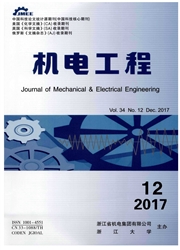

 中文摘要:
中文摘要:
针对汽车座椅抬高器承载性和安全性问题,采用显式计算方法和试验研究手段研究了抬高器的最大承载扭矩和失效行为。在有限元建模阶段,尤其是当材料应力超过其屈服极限,用真实应力-真实应变描述材料本构。发现了结构的位移、速度和加速度响应曲线随着载荷的增加,所呈现的锯齿效应逐步明显,据此得到了结构的相变转换过程及相变转换点。结合载荷时间历程,得到了座椅抬高器极限承载扭矩为96N·m与实际座椅抬高器的物理实验结果保持一致。通过拆解座椅抬高器实物,发现了抬高器实物和仿真模型的破坏失效位置非常接近。研究结果进一步验证了研究方法的正确性,为座椅抬高器的设计提供了有效指导,保证了座椅抬高器的安全可靠,验证了抬高器最大承载扭矩和关键零件的失效行为。
 英文摘要:
英文摘要:
In order to obtain the ultimate bearing characteristics,failure behavior and safety manners,the explicit finite element analysis calculation and the physical experiment were introduced to implement on the car seat elevation. On the finite element modeling,especially the material stress exceeding the yield limit,the real stress and real strain were used to descript the plasticity of material constitutive model. The structural displacement,velocity and acceleration response curves were obtained and the saw tooth effect was distinctive gradually with loading history. The phase transition was tracked through the response behavior and the phase point was extracted from the response curve. The ultimate torque of bearing seat elevation was about 96N·m calculated through the phase point and loading history curve,which is in good agreement with the experiment. The seat elevation was lost failure and found that the structural damage location,accounting for the simulation and the physics experiment disassembled was very close. The results indicate that the method is validity to give an efficient guidance design and to assure the reliability of the seat elevation,which can give some evidence to estimate the maximum bearing moment and the failure behavior owning to the key components.
 同期刊论文项目
同期刊论文项目
 同项目期刊论文
同项目期刊论文
 期刊信息
期刊信息
